- Home
- Michael Chabon
Maps and Legends Page 8
Maps and Legends Read online
Page 8
2) Let’s tell stories that, over time, build up an intricate, involved, involving mythology that is also accessible and comprehensible at any point of entry. The intricacy, the accretion of lore over time, should be both inventive and familiar, founded in old mythologies and fears but fully reinterpreted, reimagined. It will demand, it will ache, to be mastered by a child’s mythology-mastering imagination. The accessibility will come from our making a commitment to tell a full, complete story, or a complete piece of a story, in every issue. this kind of layering of intricate lore and narrative completeness was a hallmark of the great “Superman-family” books (Adventure, Jimmy Olsen, Superboy) under the editorship of Mort Weisinger.
3) Let’s cultivate an unflagging readiness as storytellers to retell the same stories with endless embellishment. Anybody who thinks that kids get bored by hearing the same story over and over again has never spent time telling stories to kids. The key, as in baroque music, is repetition with variation. Again the Mort Weisinger-edited Superman books, written by unflagging storytellers like Edmond Hamilton and Otto Binder, were exemplary in this regard. The proliferation of theme and variation there verges, at times, on sheer, splendid madness.
4) Let’s blow their little minds. A mind is not blown, in spite of whatever Hollywood seems to teach, merely by action sequences, things exploding, thrilling planetscapes, wild bursts of speed. Those are all good things; but a mind is blown when something that you always feared but knew to be impossible turns out to be true; when the world turns out to be far vaster, far more marvelous or malevolent than you ever dreamed; when you get proof that everything is connected to everything else, that everything you know is wrong, that you are both the center of the universe and a tiny speck sailing off its nethermost edge.
So much for my principles: here is my concrete suggestion. If it seems a little obvious, or has already been tried and failed, then I apologize. But I cannot help noticing that in the world of children’s literature, an overwhelming preponderance of stories are stories about children. The same is true of films for children: the central characters are nearly always a child, or a pair or group of children. Comic books, however, even those theoretically aimed at children, are almost always about adults or teenagers. Doesn’t that strike you as odd? I suggest that a publisher should try putting out a truly thrilling, honestly observed and remembered, richly imagined, involved and yet narratively straight-forward comic book for children, about children.
My oldest son is ten now, and he likes comic books. In 1943, if you were a ten-year-old, you probably knew a dozen other kids your age who were into Captain Marvel and the Submariner and the Blue Beetle. When I was ten, in 1973, I knew three or four. But in his class, in his world, my son is all but unique; he’s the only one he knows who reads them, studies them, seeks to master and be worthy of all the rapture and strangeness they still contain. Now, comic books are so important to me—I have thought, talked, and written about them so much—that if my son did not in fact like them, I think he would be obliged to loathe them. I have pretty much forced comics on my children. But those of us who grew up loving comic books can’t afford to take this handcrafted, one-kid-at-a-time approach anymore. We have to sweep them up and carry them off on the flying carpets of story and pictures on which we ourselves, in entire generations, were borne aloft, on carpets woven by Curt Swan and Edmond Hamilton, Jack Kirby and Stan Lee, Chris Claremont and John Byrne. Those artists did it for us; we who make comics today have a solemn debt to pass it on, to weave bright carpets of our own. It’s our duty, it’s our opportunity, and I really do believe it will be our pleasure.
* See, for example, www.comichron.com.
THE KILLER HOOK
HOWARD CHAYKIN’S AMERICAN FLAGG!
1.
IN A POPULAR MEDIUM that needs to label everyone a journeyman hack or a flaming genius god—like the world of comic-book art—Howard Chaykin is something else: a craftsman, an artisan of pop.
I don’t mean that Chaykin works harder on or takes greater pains with his drawing, though his panels and his layouts bear witness to the pains he takes (like many craftsmen he actually works rather fast). Nor do I mean merely that he brings deeper technical prowess to the comics page (though when it comes to page design, panel arrangement, line control, and the rendering of bodies, faces, clothing, streets, furniture, and interiors, his chops are matchless). Some of the genius gods of comic art, after all, have also been master draftsmen;* and one of the best things about popular media is that, within their capital- and calendar-driven confines, sometimes a hack, half by accident, can turn out something haunting, dreamy, or beautiful. What I’m talking about is a kind—the toughest kind—of balancing act. Taking pains, working hard, not flaunting his or her chops so much as relying on them, the pop artisan teeters on a fine fulcrum between the stern, sell-the-product morality of the workhorse and the artist’s urge to discover a pattern in, or derive a meaning from, the random facts of the world. Like those other postwar East Coast Jewish boys, Barry Levinson and Paul Simon, Chaykin, a man as gifted with a quicksilver intelligence, as irrepressible a sense of verbal play, and reservoirs of rage and humor of apparently equal depth, has spent most of his career seeking, and sometimes finding, that difficult equilibrium.
The pop artisan operates within the received formulas—gangster movie, radio-ready A-side, space opera—and then incorporates into the style, manner, and mood of the work bits and pieces derived from all the aesthetic moments he or she has ever fallen in love with in other movies or songs or novels, whether hackwork or genius (without regard for and sometimes without consciousness of any difference between the two): the bridge in a song by the Moonglows, a James Wong Howe camera angle, a Sabatini cannonade, a Stan Getz solo, the climax of The Demolished Man, a locomotive design by Raymond Loewy, a Shecky Greene routine. When it works, what you get is not a collection of references, quotes, allusions, and cribs but a whole, seamless thing, both familiar and new: a record of the consciousness that was busy falling in love with those moments in the first place. It’s that filtering consciousness, coupled with the physical ability (or whatever it is) to flat-out play or sing or write or draw, that transforms the fragments and jetsam and familiar pieces into something fresh and unheard of. If that sounds a lot like what flaming genius gods are supposed to be up to, then here’s a distinction: the pop artisan is always hoping that, in the end, the thing is going to fucking kill. He is haunted by a vision of pop perfection: heartbreaking beauty that moves units. The closest that Howard Chaykin has yet come to fulfilling that vision—though he has approached it many times—is probably still American Flagg!
* Genius can get by, even flourish, with a limited artistic tool kit.
2.
By 1982, the well-established science-fiction trope of a dystopian future America (or of a solar or galactic federation closely extrapolated from the American model), dominated by giant conglomerates, plastered with video screens and advertisements, awash in fetishized sex and sexualized commodities, fed and controlled and defined by pharmacology and violence, had been working its way into mainstream comic books for several years, particularly at Marvel. Just as Golden Age comic books had been influenced (and in some cases written) by the hacks and flaming geniuses of the slightly earlier Golden Age of science fiction, many of the creators of early-to-mid-seventies comic books showed the influence of sf’s New Wave of the previous decade. The psychotic megacities and paranoid technoscapes pioneered in 1940s sf by Alfred Bester†(far ahead of his time and sadly neglected today), and further explored by Philip K. Dick, William S. Burroughs, Harlan Ellison, J. G Ballard, Michael Moorcock, and John Brunner, were reflected in titles like Rich Buckler’s Deathlok the Demolisher, Jim Starlin’s Warlock, and the work, across many genres and titles, of Steve Gerber. Little by little, comics, along with the rest of us, began to surrender the old World’s Fair–cum-Jetsons vision of the way things were going to be.‡
† He wrote for comics, too, and is credited wit
h creating the original Green Lantern Oath.
‡ I don’t think you can discount the influence of Soylent Green (1973) and, particularly in the case of AF!, of Rollerball (1975), the first movie depiction of a future not merely ruled but styled by evil corporations.
3.
By the time that Chaykin brought out American Flagg!, in 1982, therefore, the idea of a science-fiction comic book set in a dystopian American future was not a new one; and most of the fundamental elements of the world Chaykin depicts—earth abandoned by its corporate rulers in favor of off-world colonies, marauding gangs of armed motorcycle freaks, the city as a kind of vast television or information screen that irradiates or medicates its denizens with psychotropic sitcoms, could be traced back to novels by the writers of the New Wave and their successors, to Rollerball and, of course, to Blade Runner (directed by Ridley Scott, another pop artisan, and itself based on a Dick novel), which premiered about a year before American Flagg! But no one had ever crammed those elements all together before, in quite the way that Chaykin did here: the post-nuclear, post-global-collapse, post–Cold War, corporate-controlled, media-overloaded, sex-driven, space-traveling, Jean-Paul-Gaultier-by-way-of-Albert-Speer freak-o-rama that was to be life in 2031.
What Chaykin uniquely intuited, perhaps through the process of adapting Bester in the early graphic novel The Stars My Destination (1979), was that with its fundamental liability to fragmentation, juxtaposition, and the layering of text and images; with its multiple margins into which ever denser images and subtexts and submargins could be crammed; with its ability to hyperjump a million light-years out to the edge of the galaxy in the space of a quarter-inch gap between panels; with its mongrel vocabulary, its clandestine heritage of sex and violence, its nature as corporate-owned media outlet and mass-produced object; and above all with its accumulated history of stale, outmoded, and rotting bright futures, the comic book was perfectly suited not merely to adapting but in some measure to embodying the hybridized, trashy, garish future of simulacra and ad copy that comics had been hinting at over the past decade. Other comics creators had written or drawn the American dystopia; Howard Chaykin went and built one.
4.
I fear I have made reading American Flagg! sound like a grim, possibly even dreadful task. In fact from the first panel the strip, almost twenty-five years later, remains completely exhilarating. Part of the reason for this is the virtuoso display Chaykin puts on, with a certain vandalistic Brooklyn-boy glee, of how utterly to scramble the standard deck of page layouts that comic-book artists had been shuffling and reshuffling for years. Chaykin played, dazzlingly, with the effect you could get from just a handful of dull square subpanels arranged across a big single-panel page on which, in that one big panel, something violent and wild was taking place. All that gorgeous Caniffian line, putting the flutter into a lacy cuff, setting a gleam on the visor of a leather hat, flinging a spray of blood into the air, all that lavish, nonchalant beauty plastered over with Jewish gags, neon signs, talking-head nattering, tough-guy commentary, scientific annotation! If Chaykin’s work comes squarely out of the tradition of comics art that likes to stand back and notice how pretty it is—a tradition that includes greats such as Alex Raymond, Mac Raboy, Jim Steranko, Barry Windsor-Smith, and Neal Adams—it is perhaps unique in that it also derives, less obviously, from another grand comics tradition from E. Segar to Al Capp to Kurtzman and the Mad men to Kyle Baker: the tradition of mocking wordplay, snide commentary, caricature, and the irrepressible, compulsive, sometimes perilous need to undercut more or less everything but especially comics art that likes to stand back and notice how pretty it is.
The characteristic Chaykin facial expression is the raised eyebrow—of irony, skepticism, puckishness, a satirist’s rage. In his work, on his characters’ faces, the raised eyebrow takes on an iconic power. It’s a combination of punctuation mark, the line that indicates a flexing muscle, and the kind of ripple or wave that cartoonists use to suggest motion, explosion, velocity, shock. I have never seen a published photo of Chaykin in which he fails to sport one himself.
5.
People have been imitating, swiping from, and building on Chaykin’s experiments in panel arrangement, text-balloon placement, and parallel narration for over two decades now and the thing still startles and disturbs the eye. It’s like Citizen Kane in that way. Welles and Chaykin may not have invented or pioneered all the stylistic and technical innovations on display in their masterworks, but they were the first to put them all together in a way that changed how their successors thought about what they could, and had to, and wanted to do.
Citizen Kane remains an acknowledged influence on the movies and the comics that followed it. The debt to American Flagg!, while obvious, has been neglected. Its two great mid-’80s comics successors, Frank Miller’s The Dark Knight Returns and Watchmen by Alan Moore and Dave Gibbons, are hard to imagine without its example; those two books in turn influenced much that followed. American Flagg!, in both its style and its concepts, fed the literary genre of cyberpunk that has since watered the entire landscape of popular culture, from comics and computer games to movies and television programs. Again, I’m not arguing that Chaykin invented dystopian comics or cyberpunk, only that he articulated a set of tropes and “packaged” them in a way that brought them to durable, ravishing life.
If American Flagg! were merely influential or innovative, its relative retreat from view in the past two decades would be more understandable; the same goes for its oft-remarked effectiveness as prophecy. Accurate prediction of the future, of its technologies and traumas, has always seemed to me to be the least interesting thing about science fiction. So Arthur C. Clarke predicted the global satellite network—so what? He also predicted the widespread use of hovercrafts and the dominance by 2001 of the commercial Earth-Moon space trade by Pan-Am Airlines (d. 1991). Such prescience or the obligation to display it is, more than bad writing, the element of a work of sf that most readily dooms it—regardless of whether the predictions turn out to be right or wrong. Every future we imagine is transformed inexorably into a part of our children’s understanding of their past, of the assumptions their parents and grandparents could not help but make. If American Flagg! successfully predicted certain aspects of the hundred-ply world we live in now—and I think of it every time I see a lurid news headline about a pedophilic pop-star crawl under breaking footage of carnage or disaster, while a network meat-puppet intones the latest official spin—then that very success would condemn it to seem, in time, eternally passé.
It is not, ultimately, the brilliance of its technique or the aptness of the future it imagined that makes American Flagg! an enduring, necessary, and neglected pleasure, but the impeccable pop artisanship that produced it. So many of the purest pop masterpieces, from Michael Ritchie’s Smile to Emmit Rhodes’s self-titled first solo album, are neglected ones; even an acknowledged pop masterpiece like Pet Sounds has never quite shed its initial air of puzzlement-inducing letdown. American Flagg! has all the modern virtues that would seem to guarantee its place in the pantheon of seminal pop artifacts: irony, attitude, knowingness, cynicism, a familiarity with corruption and existential bad faith, a rapturous, at times hyperbolic sense of style, and that insatiable compulsion, mentioned earlier, to undercut. Its hero, Reuben Flagg, is not just a preening, self-regarding piece of beefcake—he’s a redundant one, having been replaced, in his starring role on Mark Thrust, Sexus Ranger, by a hologram; and a self-conscious one. Nobody is more aware of the irony and implicit satire of his situation than Flagg. On the surface, he ought to be an ideal hero, and American Flagg! an ideal narrative, for our time.
But for all his cynicism and archness of eyebrow, Howard Chaykin, like so many pop artisans, draws the greatest part of his strength from the source that underlies all true visions of pop perfection: romance. Chaykin is, fundamentally, a romancer; “a storyteller,” as the cliché has it, “in the grand tradition.” Cynical, pompous or jaundiced, self-aware, embittere
d or corrupted, his heroes remain heroes, and the stories he tells never stray very far from their roots in Sabatini novels, The Shadow and Doc Savage, Chandler, Hammett, the films of Michael Curtiz. True friendship, true love, dying for a belief, self-sacrifice, even American ideals—such things, though he almost hates to admit it, are still possible in Chaykin’s work. It’s the instinct for popular narrative, for everything that Chaykin, in conversation, dismissively and affectionately terms “pulp,” that guarantees Chaykin’s status as a true pop artisan, neglect and all. But it’s that deep ambivalence toward romance, the need to undercut, that brings a problematic wobble to all Chaykin’s work. Like Paul Simon, who at once has felt and knows to be illusory the transcendent rapture of a killer hook, Chaykin’s sense of romance and its conventions is always, at the same time, a sense of betrayal by them. In his earliest comics, drawing flashy, somewhat raw adaptations of Fritz Leiber’s (already ironic) sword and sorcery tales, and creating short-lived titles such as Iron Wolf and The Scorpion, romance, the unabashed fabulating impulse of the storyteller, tended to win out. A cool head, quick reflexes, a steadfast purpose, and the love or memory of a good woman—along with that crucial Sabatinian “gift for laughter and a sense that the world was mad”—these were sufficient, or nearly so, to any challenge or evil the hero might encounter. In his recent work, although Chaykin’s technique has attained the kind of effortless polish that, as with all experienced artists, is a synonym for correctly valuing his own strengths and weaknesses, the cynicism, the undercutting, the mockery, revisionism, and satire have tended to gain the upper hand.

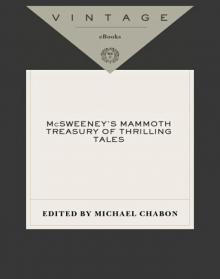 McSweeney's Mammoth Treasury of Thrilling Tales
McSweeney's Mammoth Treasury of Thrilling Tales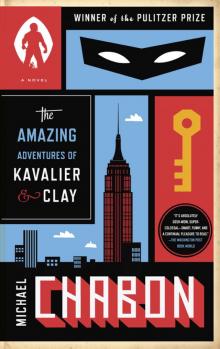 The Amazing Adventures of Kavalier & Clay
The Amazing Adventures of Kavalier & Clay The Yiddish Policemen's Union
The Yiddish Policemen's Union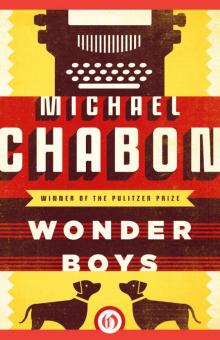 Wonder Boys
Wonder Boys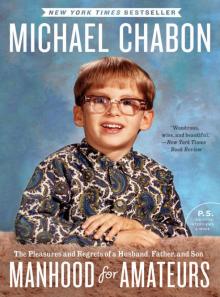 Manhood for Amateurs
Manhood for Amateurs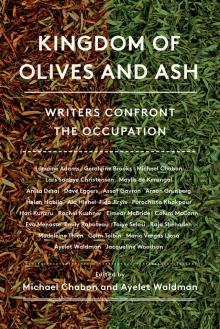 Kingdom of Olives and Ash: Writers Confront the Occupation
Kingdom of Olives and Ash: Writers Confront the Occupation Gentlemen of the Road: A Tale of Adventure
Gentlemen of the Road: A Tale of Adventure A Model World and Other Stories
A Model World and Other Stories Pops: Fatherhood in Pieces
Pops: Fatherhood in Pieces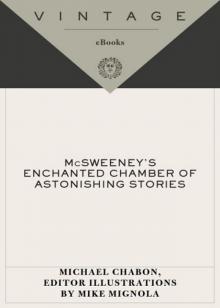 McSweeney's Enchanted Chamber of Astonishing Stories
McSweeney's Enchanted Chamber of Astonishing Stories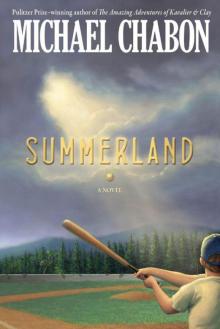 Summerland
Summerland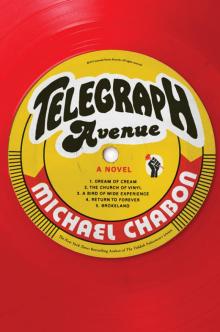 Telegraph Avenue
Telegraph Avenue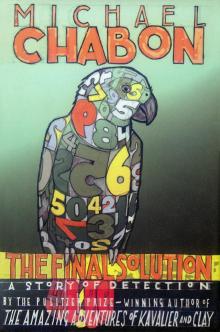 The Final Solution
The Final Solution The Mysteries of Pittsburgh
The Mysteries of Pittsburgh Werewolves in Their Youth
Werewolves in Their Youth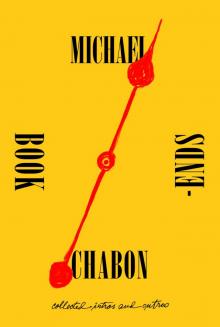 Bookends
Bookends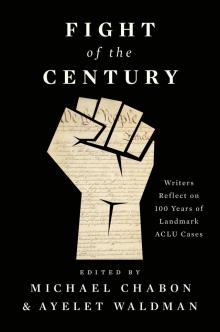 Fight of the Century
Fight of the Century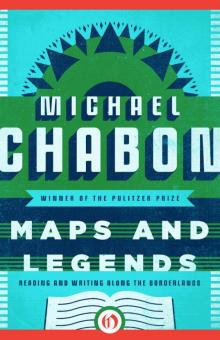 Maps and Legends
Maps and Legends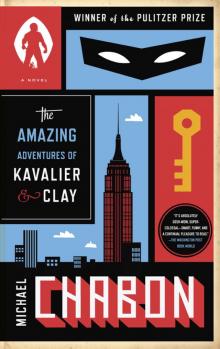 The Amazing Adventures of Kavalier & Clay (with bonus content)
The Amazing Adventures of Kavalier & Clay (with bonus content)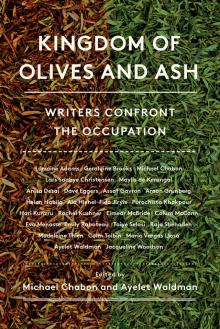 Kingdom of Olives and Ash
Kingdom of Olives and Ash Pops
Pops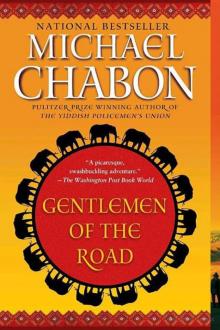 Gentlemen of the Road
Gentlemen of the Road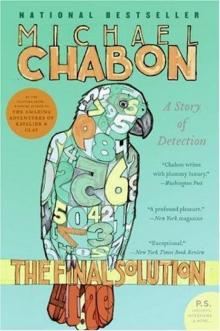 The Final Solution: A Story of Detection
The Final Solution: A Story of Detection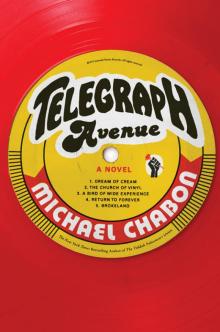 Telegraph Avenue: A Novel
Telegraph Avenue: A Novel